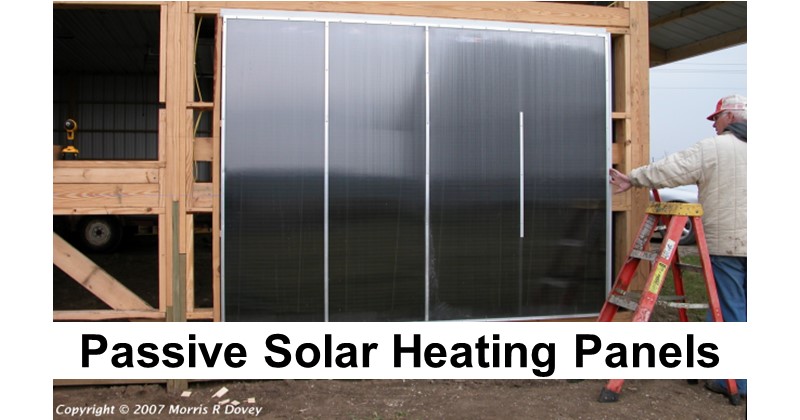
This article on the Zen of Passive Solar Heating Panel Design is a neat write-up on how to make walls that can be used to gather the power of the sun to heat your home or, in this case, a workshop.
The author clearly took this project very seriously, going so far as to angle fins to absorb the most energy of these solar panels. In fact, the author states that he can maintain the internal temperature of the shop at 65 degrees Fahrenheit when the outside temperature is about -20 degrees.. what a difference!
Here’s the beginning of the article (originally found here)…
“A solar heating panel is not just a box with a glass front, a black interior, and a pair of openings in the back. Any fool can build such a box – and many have, but very few have managed to heat an entire building with the result.
You already knew that, of course, or you wouldn’t be reading this. I mention it only because you may not have known that you knew, and because I think it’s an important starting point for our discussion.
When I decided to seriously tackle the design of a solar heating panel, I listed seven requirements for a successful design:
Passive operation
The panel must operate efficiently using only the thermal energy it captures – independent of all other energy sources.
Diurnal operation
The panel must deliver heat efficiently during the day, and not lose more than an absolute minimum of heat when there is insuficient sunshine to provide any deliverable heat.
Season-dependent heating
The panel must deliver maximum heat during winter, and a minimum in summer.
Maximum reliability
The panel must have no moving parts to wear out or fail, and must operate dependably in untended situations.
Long service life
The panel should last at least as long as the structure it heats.
Minimum maintenance
The panel should operate at full efficiency for extended periods of time without needing servicing.
Low-cost
The panel must provide the fastest payback when compared to all other heating methods, and must incur no expense after purchase and installation.My attitude was that I would take as long as needed to get the job done – and that it would cost whatever it cost. There was the possibility that I might run out of resources without achieving recognizable success, but the possible benefits of success seemed to far outweigh the risk of failure…”
Leave a Reply